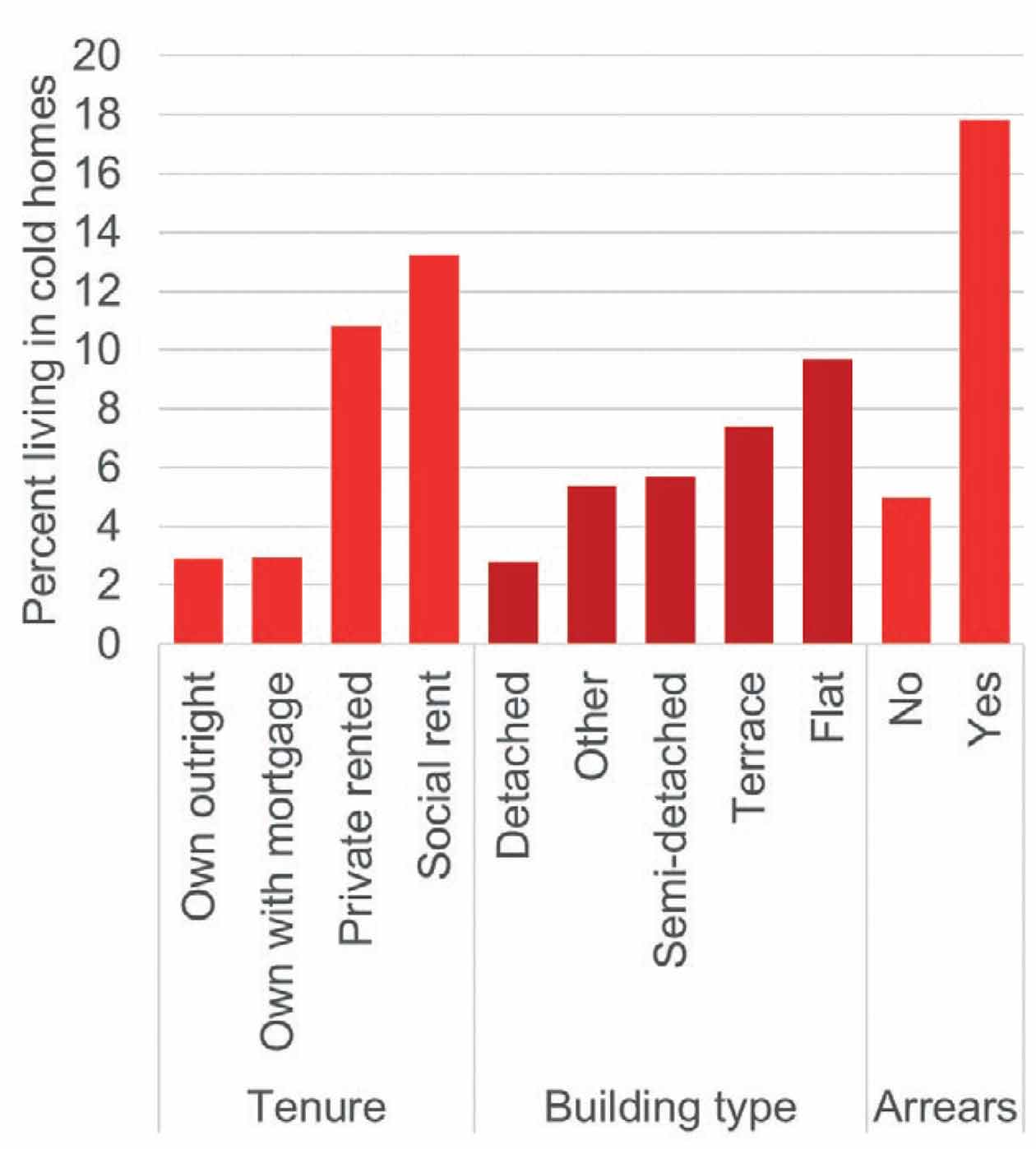After an incredibly hot summer, people in the UK have faced the double whammy of a cold winter and skyrocketing energy costs. Alongside broader cost of living challenges, this created the very real risk that people would be unable to keep their homes suitably warm over winter.
The World Health Organization recommends that temperatures are maintained at at least 21°C in living rooms and 18°C in bedrooms in order to avoid adverse health impacts. The impacts of cold indoor temperatures on physical health are well known. Cold temperatures suppress the immune system, increase the risk of respiratory and circulatory conditions, as well as exacerbating the impacts of other illnesses such as arthritis.
What is less well understood, however, is the impact of cold housing on mental health. There are several reasons why cold homes might affect mental health: the stress caused by experiencing cold itself; the stress caused by the financial strain associated with trying to heat the home; reduced feelings of control and autonomy where people are unable to keep their home as they would like it; effects on sleep; and effects on social life.
Key findings
- The risk of living in a home that is too cold is unevenly distributed across demographic and housing characteristics
- Living in a home that is too cold is associated with a significant increase in the risk of severe mental distress
- Reducing the number of people living in homes that are too cold has the potential to improve health and reduce health inequalities, with likely knock-on effects for productivity and employment
How we found it out
In order to explore the impact of living in a cold home on mental health we studied how the transition into living in a cold home affected the reported level of mental distress for people whose homes were previously suitably warm. To do this we followed Understanding Society respondents from Wave 1 (2009) to Wave 11 (2021). To ensure that we studied the impact of cold housing on mental health, and not the impact of health on housing, we restricted our sample to focus on people that 1) showed no mental distress when entering the survey, and 2) had borderline levels of mental distress, investigating the impact of moving into a cold home separately for each of these groups.
What we found out
We found that, even after controlling for relevant demographic, financial, and housing characteristics, transitioning into living in a cold home was associated with a significantly higher risk of severe mental distress. For those who had no symptoms of mental distress on entry to the survey, the risk of experiencing severe mental distress nearly doubled. For those who had borderline mental distress on entry, the risk tripled.

Figure 1 Odds of reporting severe mental distress following transition into cold housing
Why this is important
These findings show that cold homes have significant potential mental, as well as physical, health consequences. The risk of living in a cold home is unevenly distributed, with lone parents, unemployed people, and people who are not working due to illness much more likely to live in cold homes. Over 12% of Black people live in cold homes compared to under 6% of White British people. Renters are also far more likely to live in cold homes than owner occupiers. Cold homes therefore exacerbate existing inequalities with serious consequences for health.

Figure 2 Cold home inhabitants by gender, household type, lone parent, long-standing illness or impairment, ethnic group and employment status
Notes Where HH type = household type, LP = Lone Parent in household, L-S, I/I = Long-standing illness or impairment
Next steps
One of the main contributors to the issue of cold homes is the old and inefficient housing stock across the UK. For renters who have no control over structural decisions regarding their home this can be particularly challenging. The ‘split incentive’ means that the benefits of thermal efficiency improvements, such as insulation, are not felt by the people responsible for implementing them, i.e. the landlord, and so landlords are often reluctant to make improvements, leaving tenants paying to heat cold and inefficient homes. Legislating for a higher energy efficiency standard in rented homes, alongside support for owner occupiers, could potentially have significant positive health consequences, alongside reducing energy use.

Figure 3 Cold home inhabitants by type of home occupation and ownership
However, social rent homes have the highest average housing quality, yet the highest levels of people living in cold homes, heavily implicating inadequate incomes as a cause of cold homes. Other potential interventions might include support for energy bills. The winter fuel payment is paid to pensioners in recognition of the importance of adequately heated homes. It may be time to consider expanding these payments, providing some respite for people struggling with the cost of living. However, this will unlikely be enough to counter the challenges caused by falling incomes and low benefit levels at a time of increasing prices. Intervention to protect pre-payment meter energy users is also important.
Policy recommendations
Support people to meet their needs for a basic standard of living by:
- Improving support for those with the lowest incomes by removing the waiting period for Universal Credit, remove the benefit cap, and increase rates of support
- Legislating for a higher quality standard in the private rented sector
- Legislating for higher building quality standards
- Protecting households from forced transition onto pre-payment energy services and providing support for those already on pre-payment meters at risk of ‘self disconnecting’
https://doi.org/10.1016/j.socscimed.2022.115461
© MiSoC February 2023
DOI: 10.5526/misoc-2023-002
